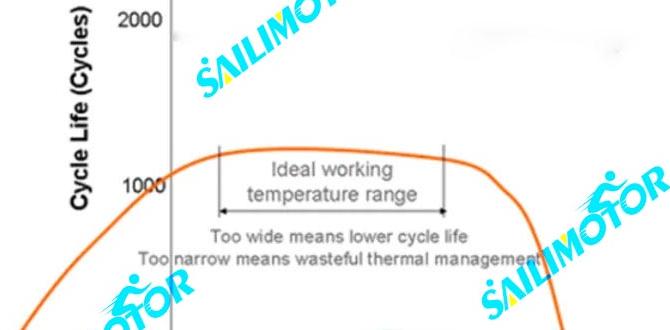Looking for a camping upgrade? A battery heated blanket for camping is your secret weapon against chilly nights. Get ready for cozy, warm adventures without worrying about the cold. This guide makes it simple to choose and use yours.
Battery Heated Blanket for Camping: Your Essential Guide to Cozy Nights
Camping is amazing, but nobody likes waking up shivering. Cold nights can turn a fun trip into a memory you’d rather forget. The good news? You can enjoy the great outdoors without the shivers, thanks to a battery heated blanket. These portable wonders bring warmth right to your sleeping bag. It might sound fancy, but choosing and using one is easier than you think. We’ll walk you through everything you need to know, so you can focus on making s’mores and stargazing, not battling the cold.
This guide will help you find the perfect battery heated blanket, understand how it works, and get the most out of it for all your camping trips. Get ready to experience camping comfort like never before!
Why a Battery Heated Blanket for Camping?
Imagine this: the campfire has died down, the stars are out, and the air has that crisp, cool evening bite. Instead of bundling up in layers that feel bulky, you simply switch on your battery heated blanket. Instantly, gentle warmth surrounds you, keeping you toasty without needing a massive power source. This is the magic of a battery heated blanket for camping. Unlike traditional blankets, these are designed with built-in heating elements powered by portable batteries, making them ideal for off-grid adventures.
They offer a convenient and effective way to stay warm when traditional heating isn’t an option. Think about it: no need to rely on a car adapter for long periods, or hope your campfire keeps the chill at bay all night. A battery powered option gives you personal control over your comfort, wherever your tent is pitched.
How Do Battery Heated Blankets Work?
At their core, battery heated blankets are pretty simple. They have thin, flexible wires woven into the fabric. When you connect a power source – typically a rechargeable battery pack – electricity flows through these wires. This causes them to heat up, gently warming the blanket and you. It’s like having a personal, portable heater that’s soft and comfortable.
The battery pack is usually connected via a small cord, often neatly tucked away. You can control the heat level with a small controller, letting you adjust the warmth to your liking. Most battery packs are rechargeable, meaning you can juice them up before your trip or even at home using a standard wall adapter. Understanding this basic setup helps you choose the right one and use it safely.
Choosing the Right Battery Heated Blanket for Your Camping Needs
With so many options out there, picking the best battery heated blanket can feel a bit overwhelming. But don’t worry, we’ll break down the key things to look for to ensure you get one that fits your camping style perfectly. It’s all about balancing warmth, portability, and power. Let’s dive into the important features:
Power Source and Battery Life
This is probably the most crucial part. Your blanket needs a reliable power source that will last through the night. Most camping heated blankets use rechargeable lithium-ion battery packs. Look for:
- Battery Capacity (mAh): Higher mAh (milliampere-hours) means longer run time. For a full night’s warmth, aim for a pack with at least 10,000 mAh or more.
- Rechargeability: Ensure the battery can be easily recharged, ideally via USB, so you can use portable power banks or car adapters.
- Run Time: Manufacturers usually specify how long the blanket can run on a single charge at different heat settings. Check this against your typical camping trip duration. A blanket that runs for 6-8 hours on a medium setting is usually a good bet for overnight use.
Heating Levels and Control
You’ll want a blanket that lets you customize your warmth. Look for features like:
- Multiple Heat Settings: Usually, you’ll find options like low, medium, and high. Some offer even finer control.
- Easy-to-Use Controller: The controller should be accessible and simple to operate, even in the dark. Buttons are often easier than touch controls when you’re wearing gloves or your hands are cold.
- Auto-Shutoff: A safety feature that turns off the blanket after a set period (e.g., 2-3 hours) can prevent overheating and save battery life.
Blanket Material and Size
Comfort and practicality go hand in hand. Consider:
- Material: Look for soft, durable, and insulating fabrics like fleece or flannel. Some are even water-resistant, which is a bonus for camping. Ensure the fabric is breathable to avoid feeling clammy.
- Size: Do you want a personal-sized throw for your sleeping bag, or a larger one to share? Standard throw sizes are common, but some are designed to fit over a sleeping bag.
- Weight and Packability: Since you’ll be carrying it, a lightweight and easily foldable blanket is a must. Check if it comes with a carrying case.
Safety Features
Safety is paramount, especially with anything involving electricity and heat. Ensure your blanket has:
- Overheat Protection: This is crucial. The blanket should have a mechanism to prevent it from getting too hot.
- Low Voltage Operation: Most battery-powered devices operate at safe low voltages.
- Certifications: Look for certifications like CE or FCC, which indicate the product meets safety standards.
Comparing Different Types of Heated Camping Blankets
While the core concept of a battery heated blanket for camping is the same, there are subtle differences that might make one a better fit for you than another. Understanding these can help you make the perfect choice. Here’s a quick comparison:
Rechargeable Battery Packs vs. Alternatives
The most common option uses integrated or detachable rechargeable lithium-ion battery packs. These are convenient because they don’t need external power during use. However, their capacity is finite, and you’ll need to recharge them. Some might have options to plug into a USB power bank or even a car charger, offering more flexibility.
Integrated vs. Detachable Battery Systems
Some blankets have the battery pack permanently attached, often in a small pocket. Others have a detachable battery system. A detachable system can be advantageous because you might be able to use the battery pack for other devices (like charging your phone) or bring spare batteries for longer trips.
Built-in Heating Elements vs. Heated Inserts
Most modern heated blankets have the heating elements woven directly into the fabric. This ensures even heat distribution and comfort. Less common are heated inserts, which are separate heated panels you slip inside a regular blanket. The woven-in element type is generally preferred for camping due to its seamless integration.
Essential Tools and Accessories for Your Battery Heated Blanket
To get the most out of your battery heated blanket, having the right accessories is key. These aren’t just nice-to-haves; they ensure your blanket is ready when you are, keeps you warm effectively, and allows for flexible power options. Here’s what you’ll want to consider:
1. A Reliable Power Bank
This is your backup or primary power source. Look for a high-capacity USB power bank (20,000 mAh or higher is recommended for extended trips) that supports fast charging. You can use this to recharge the blanket’s battery pack or, in some cases, power the blanket directly if it has a USB input.
2. USB Wall Charger and Car Charger Adapter
For recharging the battery pack at home or in your car overnight, a good quality USB wall charger is essential. A car charger adapter with multiple USB ports is also incredibly useful for topping up your battery or powering other devices while you’re on the move. Ensure they deliver sufficient wattage for efficient charging.
3. Waterproof/Insulated Stuff Sack
Protecting your blanket and its battery from the elements is vital. A waterproof or water-resistant stuff sack will keep your blanket dry during rainy days or dew-heavy mornings. It also helps keep the battery pack clean and protected from dirt and accidental impacts.
4. Extension Cables (Optional, Use with Caution)
If the blanket’s battery lead is short, you might consider a USB-C extension cable if your blanket and power bank use that standard. However, always use high-quality cables and be mindful of voltage drop over long distances, which can affect performance. For heated blankets, it’s often best to keep the connection as direct as possible to avoid issues.
5. Extra Battery Pack (For Long Trips)
If your camping trips are longer than a couple of nights, consider investing in a second fully charged battery pack. This way, you can swap them out when one runs low, ensuring you have continuous warmth throughout your adventure.
Setting Up and Using Your Battery Heated Blanket
Getting your heated blanket ready for action is straightforward. Like setting up a new gadget, a few simple steps ensure you’re good to go. Think of it as preparing for coziness!
Step 1: Charge the Battery Pack
Before your first use, and for every trip, fully charge the battery pack. Connect it to a wall charger or a suitable power bank. The indicator lights on the battery will usually tell you when it’s fully charged (often turning from red to green or blue).
2. Connect the Battery to the Blanket
Locate the connection port on the blanket. This is usually a small flap concealing a USB or proprietary connector. Plug the battery pack’s cable securely into this port. Make sure it’s a snug fit so it doesn’t come loose.
3. Power On and Set Your Desired Temperature
Find the controller, usually attached to the power cord. Press the power button. You should see an indicator light come on. Use the up/down buttons or heat level selector to choose your ideal warmth setting. Start on a medium setting and adjust as needed. It’s best not to crank it to high immediately, as it might be warmer than you expect!
4. Position for Maximum Comfort
For sleeping, you can place the blanket directly over your sleeping bag’s liner, or inside your sleeping bag, allowing the heat to radiate upwards. If using it around a campsite, drape it over yourself like a regular blanket. Ensure the battery pack itself isn’t overheating or making you uncomfortable.
5. Monitor and Adjust
During use, check the battery level periodically, especially on longer trips. Adjust the heat setting if you start to feel too warm or too cool. Most automatic shut-off features will engage after a few hours, which is normal and a safety measure.
6. Power Off When Not in Use
Remember to turn off the blanket and disconnect the battery when you’re awake and active, or when you leave your campsite unattended. This conserves battery and is a good safety practice.
Battery Heated Blanket for Camping: Safety First!
Your safety is our top priority. While battery heated blankets are designed to be safe, a few common-sense practices will ensure a worry-free experience. Think of these as simple habits that keep you warm and protected:
Never Use a Damaged Blanket or Battery
If you notice any frayed wires, tears in the fabric, or damage to the battery pack or its cable, do not use the blanket. Continuing to use damaged equipment could be a fire hazard or cause electrical shock. Contact the manufacturer for a replacement.
Keep Away from Water and Moisture
While some camping blankets may have a degree of water resistance, they are not waterproof. Avoid using them in heavy rain or in very damp conditions where moisture could seep into the battery pack or electrical components. Always store the blanket and battery pack somewhere dry when not in use.
Ensure Good Ventilation
Don’t cover the blanket with additional heavy materials that could trap heat excessively. Allow for some airflow around the blanket to prevent overheating. Ensure the battery pack itself has some air circulation and isn’t buried under other gear while charging or in use.
Unplug When Not in Use or Leaving Camp
Always switch off the blanket when you’re not actively using it, such as when you’re hiking during the day or when leaving your campsite unattended. This saves battery life and reduces any potential risk. Unplug the battery from the blanket when storing.
Read the Manufacturer’s Instructions
Every blanket is slightly different. Always take a moment to read’s the manufacturer’s specific care and safety instructions. They will provide crucial details unique to your model, such as recommended charging times, cleaning procedures, and specific safety warnings.
Avoid Extreme Temperatures for Battery Storage
When not in use, store your battery pack in a cool, dry place. Extreme heat or cold can damage the battery, reduce its lifespan, and potentially create a safety hazard. Following proper battery storage guidelines is essential for longevity and safety.
Care and Maintenance for Your Heated Blanket
Keeping your battery heated blanket in good condition ensures it works reliably and safely for many camping trips to come. Proper care is simple and makes a big difference. Here’s how to look after it:
Cleaning Your Heated Blanket
Most battery heated blankets are designed for easy cleaning. Always disconnect the battery pack before washing! Check the manufacturer’s label:
- Machine Washing: Many are machine washable on a gentle cycle with cold water. Use a mild detergent.
- Hand Washing: If machine washing isn’t recommended, hand wash gently in cool water with a mild detergent.
- Drying: Never put your heated blanket in a dryer, as the heat can damage the wiring. Always air dry. Lay it flat on a clean surface or hang it over a drying rack, away from direct sunlight. Ensure it is completely dry before storing or using it again.
Storing Your Heated Blanket
When you’re not camping, store your blanket properly to protect it:
- Disconnect the Battery: Always disconnect the battery from the blanket before long-term storage.
- Fold Gently: Fold the blanket loosely. Avoid creasing or tightly rolling the area where the wires are located, as this can cause damage over time.
- Keep it Dry: Store in a cool, dry place, ideally in its original bag or a breathable storage sack. Avoid damp basements or garages.
- Battery Storage: If storing the battery long-term, it’s best to keep it charged to about 50-60%. Avoid storing it fully depleted or fully charged for extended periods, as this can degrade its capacity.
Checking for Damage
Before each trip, and occasionally during storage, give your blanket a quick visual inspection. Look for any:
- Frayed or damaged wires
- Tears or holes in the fabric
- Loose connections
- Damage to the battery pack or controller
If you spot any issues, contact the manufacturer immediately. Do not attempt to repair it yourself.
Battery Heated Blanket for Camping: Pros and Cons
Like any piece of gear, battery heated blankets have their advantages and disadvantages. Weighing these can help you decide if it’s the right addition to your camping kit. Here’s a look at the good and the not-so-good:
Pros:
- Personal Warmth: Provides direct, controllable warmth exactly where you need it.
- Portability: Designed for travel, lightweight, and battery-powered for off-grid use.
- Convenience: Easy to set up and use, offering instant comfort on cold nights.
- Versatility: Can be used in a tent, in a car, or even at home during power outages.
- Energy Efficient (Personal): Uses less energy than trying to heat an entire tent space.
Cons:
- Battery Life Limitations: Run time is limited by battery capacity, requiring recharging or spare batteries for longer trips.
- Initial Cost: Can be more expensive than a traditional sleeping bag or blanket.
- Weight of Battery: The battery pack adds some weight to your gear.
- Dependence on Power: If the battery dies and you have no way to recharge, it becomes a regular blanket.
- Care Requirements: Requires specific cleaning and storage to maintain functionality and safety.
Boosting Battery Performance and Longevity
Making your battery heated blanket’s power source last longer and keeping the battery itself healthy is all about smart usage and care. It’s not complicated, just a few simple tricks:
Use the Lowest Effective Heat Setting
Start on a lower setting and only increase it if absolutely necessary. Higher settings drain the battery much faster. You’ll often find that a medium or even low setting is perfectly comfortable, especially inside a sleeping bag!
Pre-Warm Your Blanket
Before you get into your sleeping bag, turn on the blanket for 10-15 minutes. This heats up the blanket and the air inside your sleeping bag, creating a warm environment before you even get in. This means you can often use a lower setting or turn it off sooner.
Layer Wisely
Your heated blanket works





